Eating out is great – no cooking and no dishes. But after you’ve placed your order, there’s always one drawback: the dreaded wait. Conversation and people-watching may distract you for a short while, but it’s only a matter of time before boredom and hunger set in.
Then comes the emotional roller coaster of expecting every server that walks by to be carrying your food, only to watch, hungry and powerless, as they walk right past you to another table. At some point, while all this is happening, you have to ask yourself, what could be taking so long?

GIF courtesy of reactiongifs.com
Everyone orders the same thing
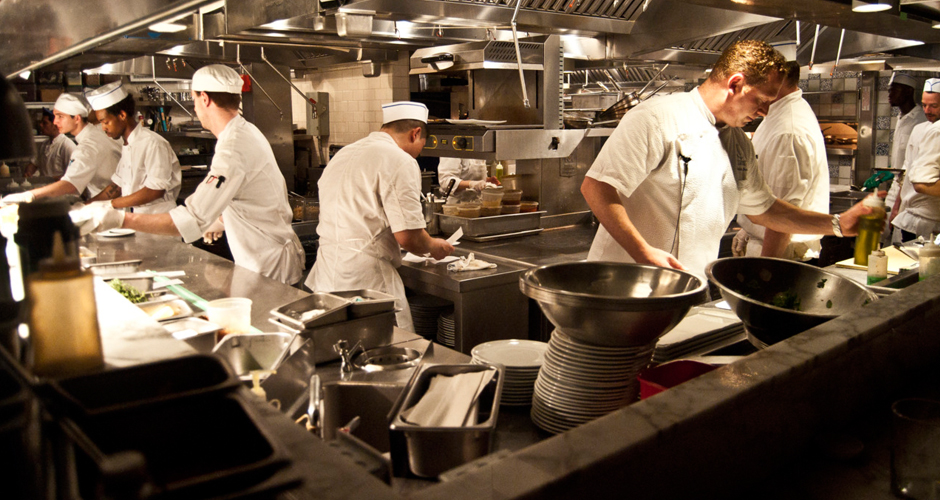
Photo by Liz Barclay
Chances are your server made a recommendation for your order. You may or may not be sold on your server’s pitch about the day’s special, but every other table they serve for the night will get that same recommendation.
Each day before service, things like pasta and bread are partially pre-cooked to save time. Unfortunately, it’s not uncommon for servers to sell more than what the kitchen had prepared on a busy night. If the restaurant is new and the clientele is unfamiliar with the food, then they’re even more likely to follow the server’s recommendations. Suddenly, there are seven orders of pasta that need to be cooked from scratch.
The servers are busy
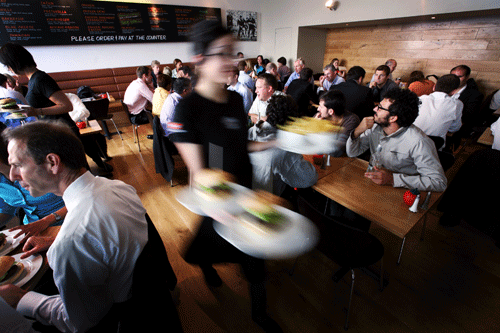
Photo courtesy of teleburst.wordpress.com
The servers are the ones who run food to your table; but that’s between doling out menus, taking orders, cleaning and setting tables, checking up on guests, and collecting bills – all for multiple tables. If there’s no hostess or bartender, servers also have to seat tables and mix cocktails as well.
So there is always a possibility that your food was made quickly, but your server is caught up in making margaritas. If you see a large group of people waiting to be seated and no hostess in sight, your food might have to wait for a little while longer.
Communication breaks down
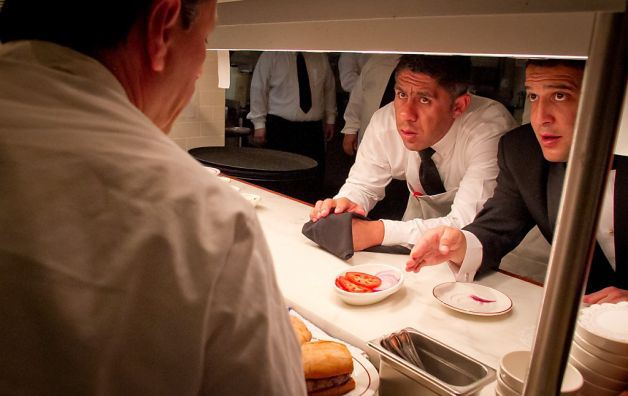
Photo courtesy of thecheflife.wordpress.com
A lot of kitchens just use old-fashioned bells to let their servers know when food is ready to picked up. But sometimes, ambient noise from guests and background music can drown out that all-important *ding* and there’s no way for the kitchen staff to know that the servers didn’t hear the call to action.
Assuming that the servers are on their way and not wanting to annoy them, kitchen staff will wait patiently until they’re sure that the servers didn’t hear before ringing the bell again. Communication breakdowns are definitely responsible for some of those dreaded minutes of wait time.
The kitchens are understaffed
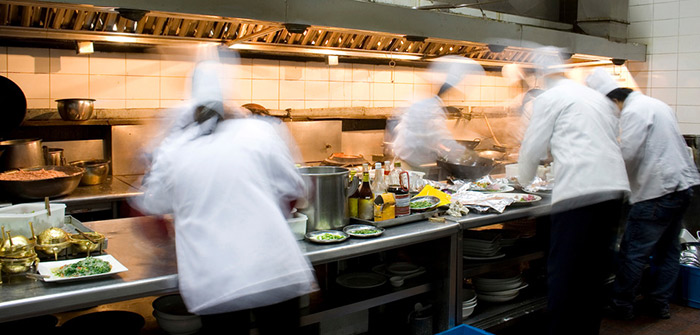
Photo courtesy of foodservicewarehouse.com
To save on labour costs, restaurants frequently leave their kitchens understaffed. Sometimes it’s so extreme that there is only one person running the whole kitchen, making starters, mains, and desserts on top of washing dishes.
There are also times when a cook simply doesn’t show up to work, possibly because they’re battling a wicked hangover from the previous night’s debauchery. Jobs in the restaurant industry come with stressful working conditions and long shifts that stretch into the small hours of the night. After a twelve hour shift of working in a loud, cramped space surrounded by fire, who wouldn’t want to go for a few (read: a ton of) drinks?
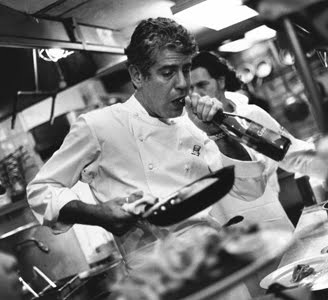
Photo courtesy of vincentborgese.com
The industry is starting to distance itself from its seedy roots of drinking and substance use, but one can still find excess in the after-hours partying culture. This means that if a cook is down and out for whatever reason, the rest of the team has to cover the no-shows (a cook who doesn’t show up, as per industry lingo) station, and subsequent slowdowns are inevitable.
The list of hold-ups for your food stretches on and on. Sometimes it’s a conscious decision made by the kitchen, like prioritizing smaller tables over large parties even when their orders come in later. The bigger table that ordered first might have to wait a few more minutes, but it saves a table of two from having to wait twenty minutes while the kitchen pushes out the large party’s banquet.
Finally, there are unforeseen screw-ups that happen. Plates get dropped, things get forgotten, and sometimes dishes have to be made again from scratch. Service industry staff are human too, and sometimes we have to take a step back and remind ourselves of that.


